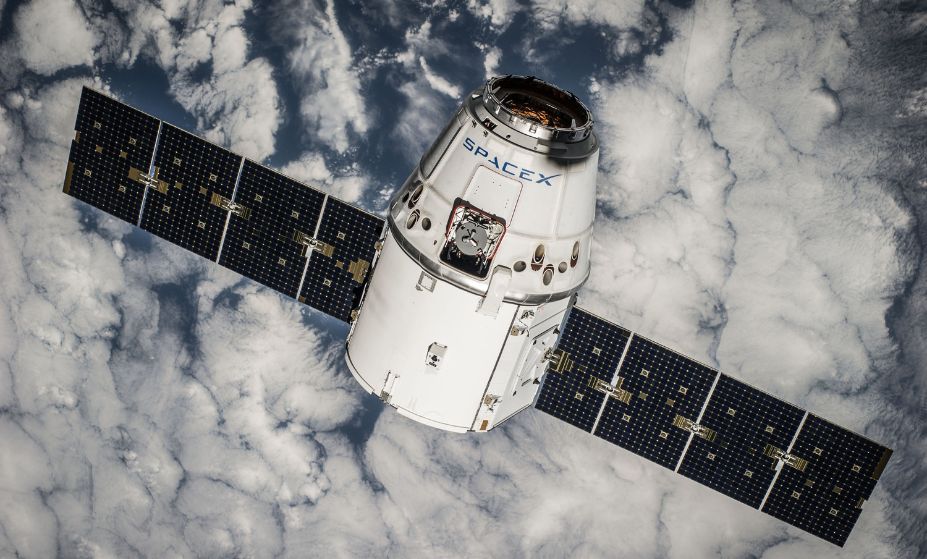A SpaceX Falcon 9 rocket will fly for a record-breaking 14th time on Saturday night (Sept. 10), launching 34 of the company’s Starlink internet satellites and a huge direct-to-smartphone connectivity test spacecraft to orbit, and you can watch it live.
The two-stage Falcon 9, topped with the Starlinks and AST SpaceMobile’s Blue Walker 3 test satellite, is scheduled to lift off from NASA’s Kennedy Space Center (KSC) in Florida Saturday at 9:20 p.m. EDT (0120 GMT on Sept. 11). Watch it live here at Space.com, courtesy of SpaceX, or directly via the company (opens in new tab).
The liftoff will be the 14th for this particular Falcon 9 first stage, setting a new rocket-reuse record. According to a SpaceX mission description (opens in new tab), the booster also helped launch SpaceX’s first-ever astronaut mission, the Demo-2 flight to the International Space Station (ISS), in May 2020; the ANASIS-II satellite for the South Korean military in July 2020; the robotic CRS-21 cargo mission to the ISS in December 2020; the Transporter-1 and Transporter 3 rideshare flights in January 2021 and January 2022, respectively; and eight Starlink missions.
Related: SpaceX’s Starlink megaconstellation launches in photos
The Falcon 9 first stage will come back to Earth for yet another landing on Saturday night. It will make a pinpoint touchdown atop SpaceX‘s A Shortfall of Gravitas droneship in the Atlantic Ocean 8.5 minutes after liftoff, if all goes according to plan.
The rocket’s upper stage, meanwhile, will continue powering its way to orbit. It’s scheduled to deploy Blue Walker 3 just under 50 minutes after liftoff and the 34 Starlinks an hour and 14 minutes later. Making all this happen will require five engine burns — more than on any other Falcon 9 mission, according to the SpaceX mission description.
“One of our most complex missions,” company founder and CEO Elon Musk said via Twitter on Friday (opens in new tab) (Sept. 9).
Starlink is SpaceX’s broadband constellation, which already provides service to hundreds of thousands of people around the globe. The company has launched more than 3,200 Starlink satellites to date and plans to loft many more; it has permission to put 12,000 Starlink craft into orbit and has applied for permission for up to 30,000 additional satellites.
Indeed, yet another Starlink batch will go up this weekend, if all goes to plan: A Falcon 9 carrying 54 Starlinks is scheduled to launch late Sunday night from Cape Canaveral Space Force Station, which is next door to KSC.
Late last month, SpaceX founder and CEO Elon Musk announced a deal with T-Mobile to provide connectivity directly to smartphones using Starlink Version 2 satellites, a bigger and more powerful variant scheduled to come online next year. Saturday night’s launch will feature a craft with similar ambitions in Blue Walker 3.
BlueWalker 3 is a test satellite that will be operated by Texas-based company AST SpaceMobile, which plans to build a space-based cellular broadband network of its own.
“We’re delighted to see the industry’s excitement around the satellite-to-phone connectivity model, which we have been building for over five years,” Scott Wisniewski, chief strategy officer at AST SpaceMobile, said in an emailed statement.
“Our upcoming launch of the BlueWalker 3 test satellite will be a major validation of this large and growing globally market opportunity,” he added.
BlueWalker 3 will feature a phased-array antenna that covers 693 square feet (64 square meters) — the largest commercial communications array ever deployed in low Earth orbit, AST SpaceMobile representatives said in an emailed statement. The satellite may be brighter than everything in our night sky except the moon, New Scientist reported (opens in new tab).
SpaceX has launched 40 orbital missions in 2022 so far. Twenty-six of them have been primarily devoted to building out the Starlink megaconstellation.



